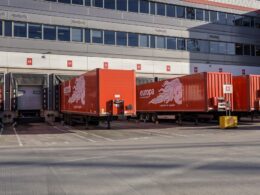The upstream industry is witnessing an unprecedented level of globalisation. Faced with stiff competition and a dwindling resource base, upstream companies are looking for new avenues of growth. An increasingly connected gas market, wider M&A opportunities, unconventional boom and improved access to technology have helped upstream companies diversify their asset base and increase their production.
However, these activities have also resulted in increased supply chain complexity due to the varying nature and size of assets, different production mechanisms, multiple asset ownerships, the various grades of hydrocarbons produced, ageing facilities and diverse customer bases with multiple product off-take points. In addition to that, there is increasing co-dependency on hydrocarbons being produced from production assets. For example, gas being produced from gas reservoirs is used for pressure maintenance in oil reservoirs and condensate being produced from gas reservoirs is mixed with crude oil to maintain crude quality. Finally, upstream companies need to manage this increased complexity amid an uncertain business environment characterised by volatile demand, price fluctuation, existing geopolitical dynamics, changing regulatory requirements and natural calamities.
Increased complexity and uncertainty have resulted in a far greater risk for supply chain disruption. This disruption can lead to reduced plant capacity, production availability or changed product quality. Such disruptions require upstream companies to make fast and appropriate decisions to minimise financial or reputational damage while still complying with their asset integrity and regulatory constraints. What complicates decision making though is the extensive communication and coordination that is required across multiple stakeholders. These are often based in different locations, have differing objectives as well as complex trade-offs across these objectives.
To illustrate this, let’s consider a hypothetical scenario of an upstream company operating geographically dispersed gas and oil producing assets. Gas is processed in a gas processing plant from where it is dispatched to gas buyers after separating condensate. Crude oil is processed separately and stored in a storage tank from where it’s loaded into ship tankers. There is co-dependency between oil and gas where some of the gas is injected back into the oil reservoir for pressure maintenance while condensate is mixed with crude oil in the storage tanks to maintain crude quality in certain ratios of production.
In a certain supply chain disruption event, an equipment trip in the gas processing plant shuts down gas and condensate production. While standby equipment is available to restore production, it’s due for planned maintenance for some time. Unfortunately due to bad weather there is also a possibility of scheduled crude tanker getting delayed. There are multiple consequences of this event including inability to deliver gas to gas buyer, storage tank overflow, unavailability of gas for pressure maintenance and change in crude quality due to condensate unavailability.
Stakeholders from asset operations, planning, scheduling and commercial groups need to work with each other to quickly develop a recovery plan. To that effect they develop decision options with associated sub-options based on three possible future scenarios.
Each of the above decision options has certain trade-offs between reservoir management, asset integrity and commercial objectives. For example, in decision sub-option 1a and 1d, maintaining crude production protects revenue but may impact reservoir management in the absence of gas for pressure maintenance.
Upstream companies facing similar situations as the one described above have understood the importance of systematically building organisation decision making capabilities to reduce the impact of supply chain disruptions.
Building an agile supply chain decision making capability
Below are the key technology enablers that can help upstream companies build agility in their decision making during supply chain disruptions.
- Real time physical collaboration centres co-locating planning, scheduling and commercial stakeholders, and connecting them with operations asset teams
- Visualisation systems providing a real time view of the supply chain (product flow, demand forecast, production schedules, stock position etc) for fast information exchange between stakeholders
- Decision support systems to scientifically evaluate trade-offs in departmental objectives through what-if analysis
- Predictive analytics to anticipate equipment failure and help advance planning for supply chain disruptions
In addition to these we recommend the following organisation and process enablers:
Organisation enabler: Planning and scheduling groups need to work closely with multiple asset teams to get a better picture of the production situation for their day to day planning and scheduling of tasks. This also enables them to communicate back any changes required to operational activities and get operations asset teams to agree with them. This type of extensive coordination if done remotely may prove to be a barrier to fast decision making especially when the planning and scheduling group may not have in-depth understanding of asset side operational dynamics.
To overcome this challenge, a cross-asset representative team should be formed and co-located with planning and scheduling groups in a collaboration centre. This team should be staffed with specialist resources that have a strong understanding of multiple asset operations and can bring a holistic view of cross-asset production behaviour and constraints to decision makers in the event of supply chain disruptions.
Process enabler: Given the differing priorities and objectives of multiple stakeholders and the potential for conflicts in the decision making process, it’s important to clearly define and document decision making roles, communication channels and escalation paths. Standard operating procedures should be defined and implemented for a super-set of decision options.
Implementation Considerations: Leveraging Integrated Operations Experience
All these enablers are interdependent; hence it’s important to address all of them in an implementation plan. For example, in the absence of organisation enablers, the benefits of technology would be limited; or without well-defined processes, a lot of time would be wasted in communicating and agreeing the actions. At the same time, implementing all these enablers will require significant system integration and organisation change management capability, making implementation a truly complex endeavour.
Upstream companies have invested or are investing in integrated operations programmes that are focussed on operations side decision making. These programmes deliver similar enablers as described above and require similar capabilities in system integration and change management across organisation, process and technology dimensions. It means that many upstream companies have already acquired the necessary organisation capabilities to implement complex change programs. Most of the integrated operations technology infrastructure can be leveraged and extended to cover supply chain decision making enablers reducing implementation cost.
We believe that upstream companies that have already invested in integrated operations programmess can realise greater business value by extending their scope to supply chain operations and find a fitting solution to decision making complexity.
Hemant Kumar, Practice Head (India & ME), Upstream Oil & Gas, Wipro Ltd













